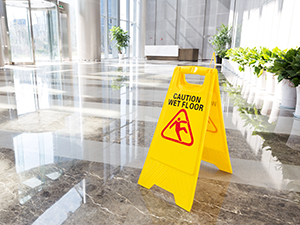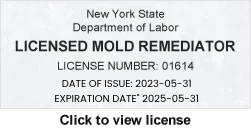
Slip and Fall Accident
A friend of mine recently slipped and fell, hitting her head on a hard tile floor. Thankfully, she only suffered a mild concussion, but it could have been much worse. Once I knew she was okay, I asked her, “What happened?”
“I had just mopped the floor, and it was mostly dry, but there was one place where a few drops of water remained,” she said. “I was walking from the kitchen to the dining area, and it happened so fast, I was on the ground before I was even aware of what happened.”
Slippery Floors
On some tile floors, just a little bit of moisture is enough to create an unsafe situation. And wetness can be caused by so many everyday things. It’s common for kids to come running into the house from outside with wet feet. Just a few drops of liquid from a spill, a pet accident, or some other source of wetness can be enough to send you, a family member, or guest to the emergency room.
Slip and fall accidents aren’t just a residential concern. According to the National Floor Safety Institute, 85% of worker’s compensation claims are attributed to employees slipping on slick floors (Industrial Safety & Occupational Health Markets 5th edition).
Floor and Surface Treatments Can Help
There are solutions available. Slip resistance treatments can help prevent injuries from slip/fall by creating microscopic suction cups on your concrete, terrazzo, or stone and tile surfaces. The resulting increase in the coefficient of friction (CoF) on otherwise slippery floors, bathtubs, showers, and pool surrounds can minimize the banana peel effect, without changing the appearance of the surface.
You’ve heard it said that it’s better to be safe than sorry. When it comes to slippery floors, this is especially true. If your floors get slippery when wet, call a professional who works with the surface you have and do something about it.
This is one of a series of articles written and published on behalf of Stone and Tile PRO Partners.




